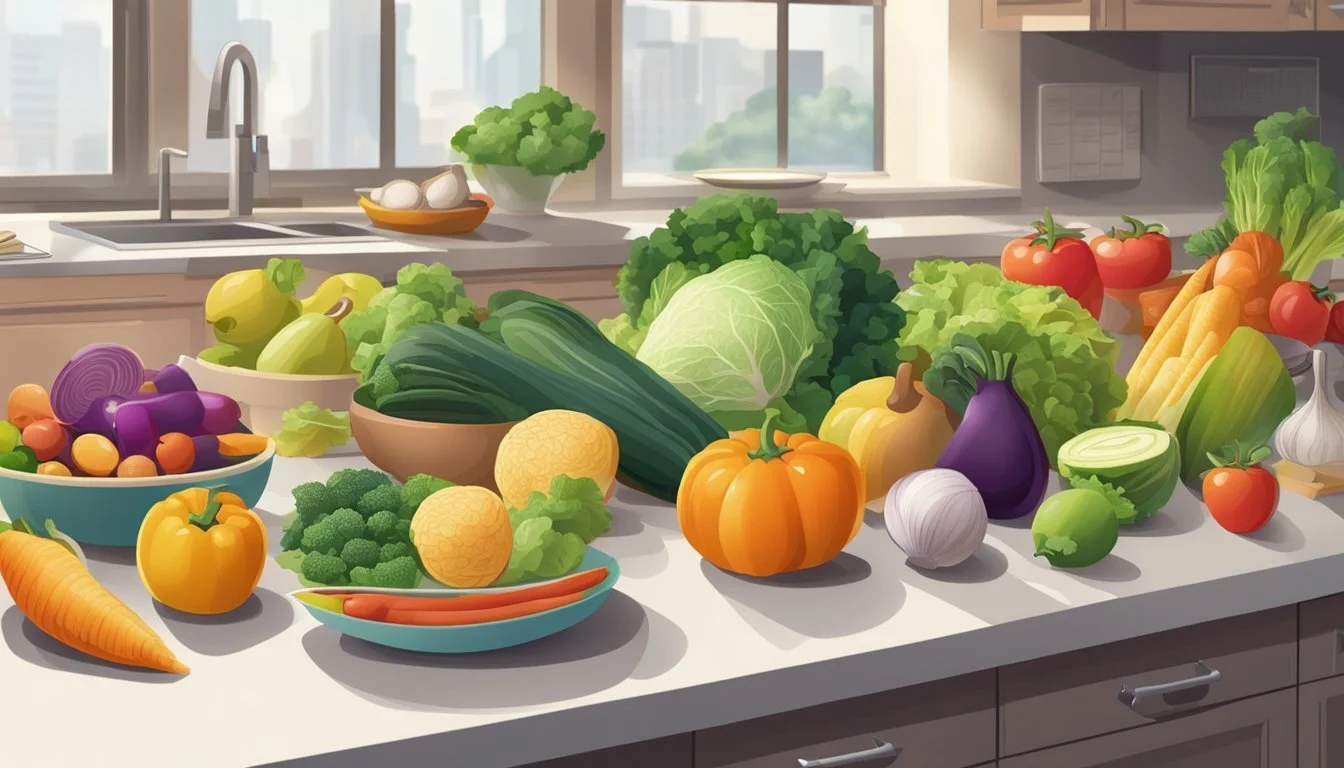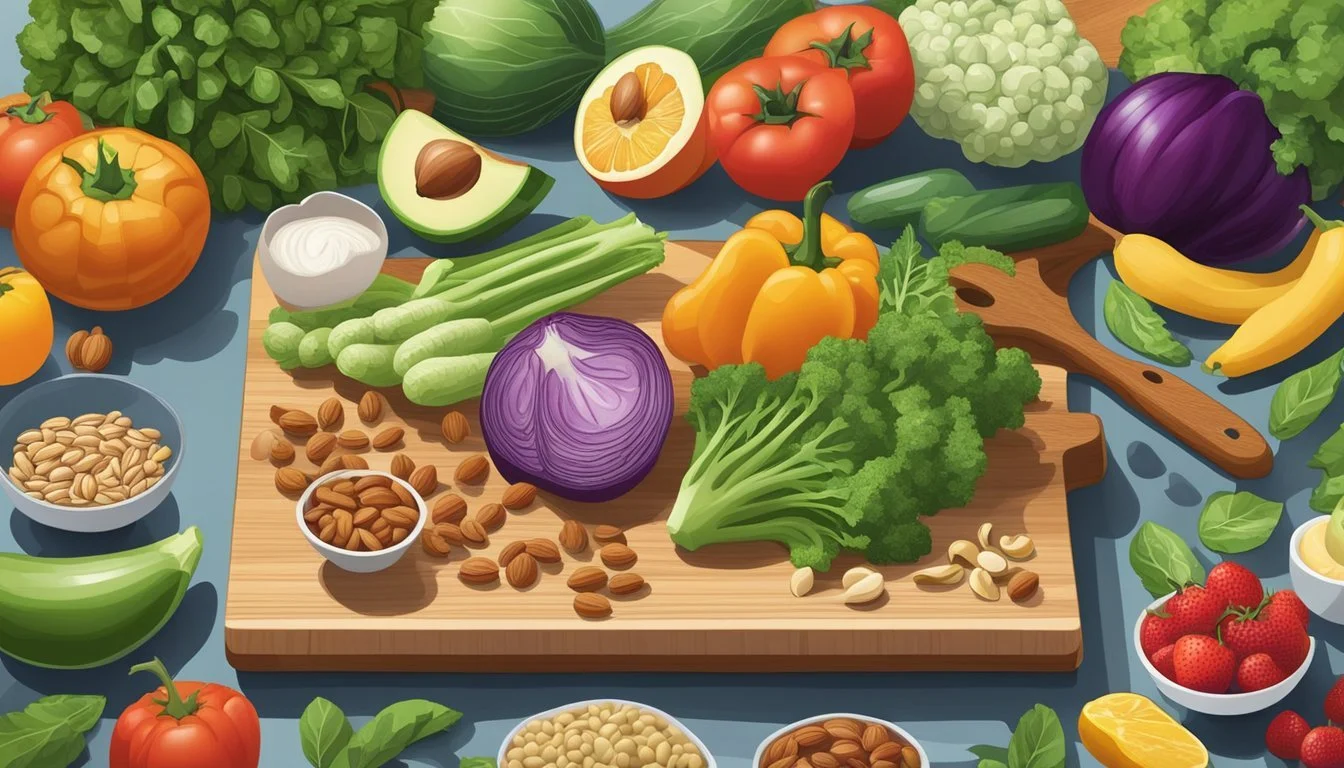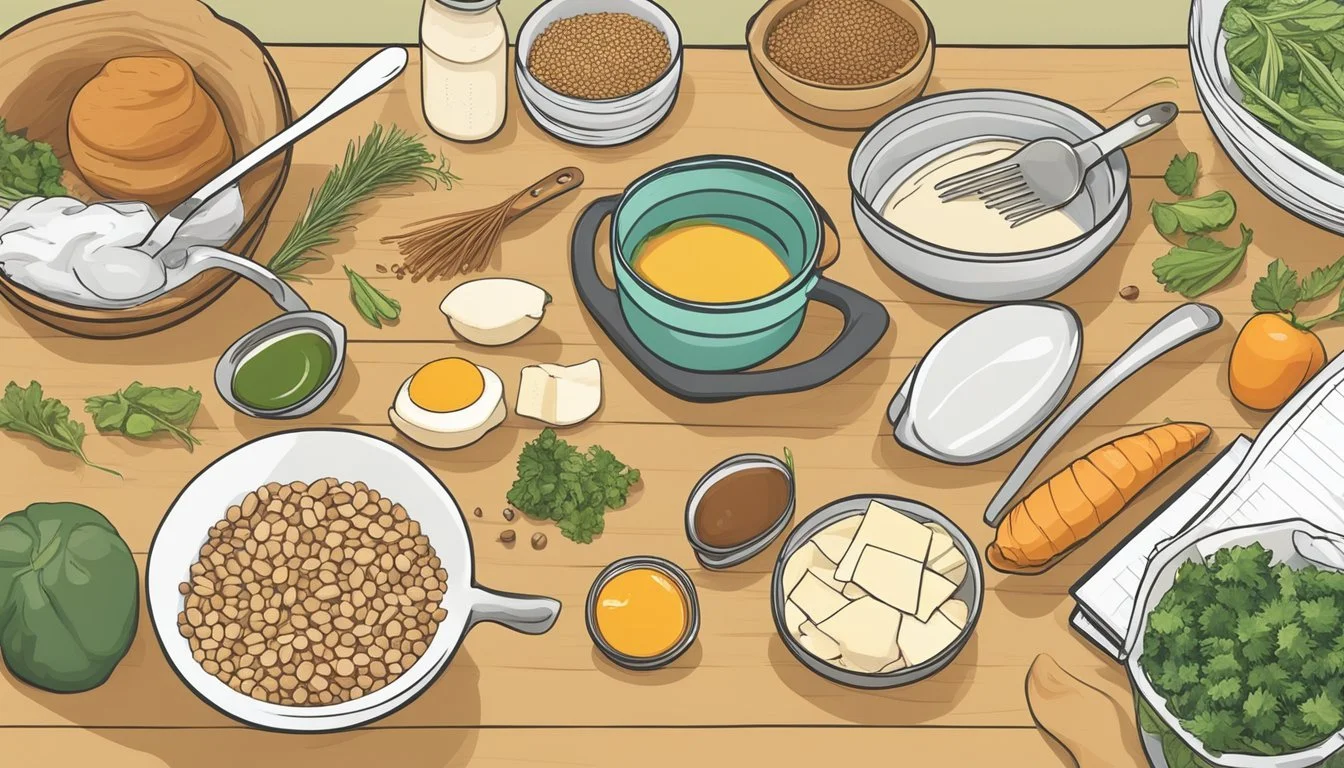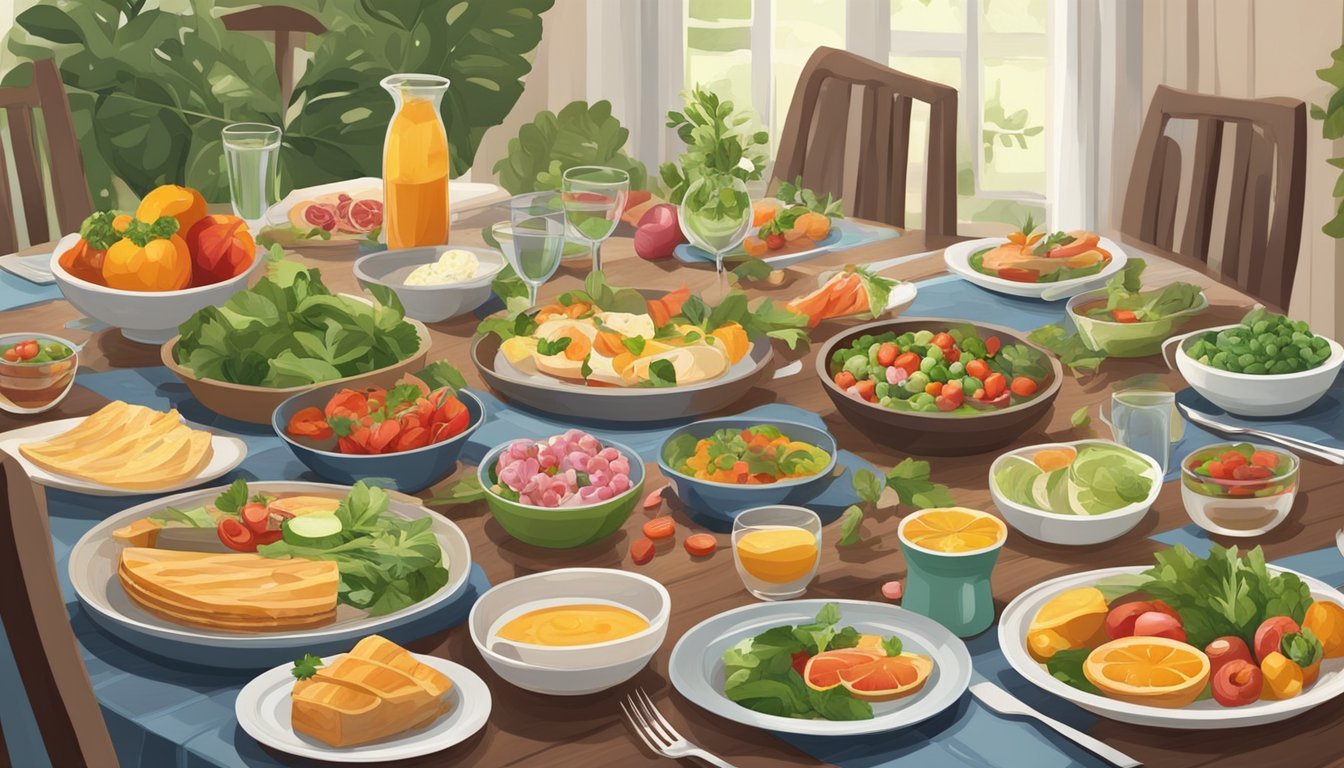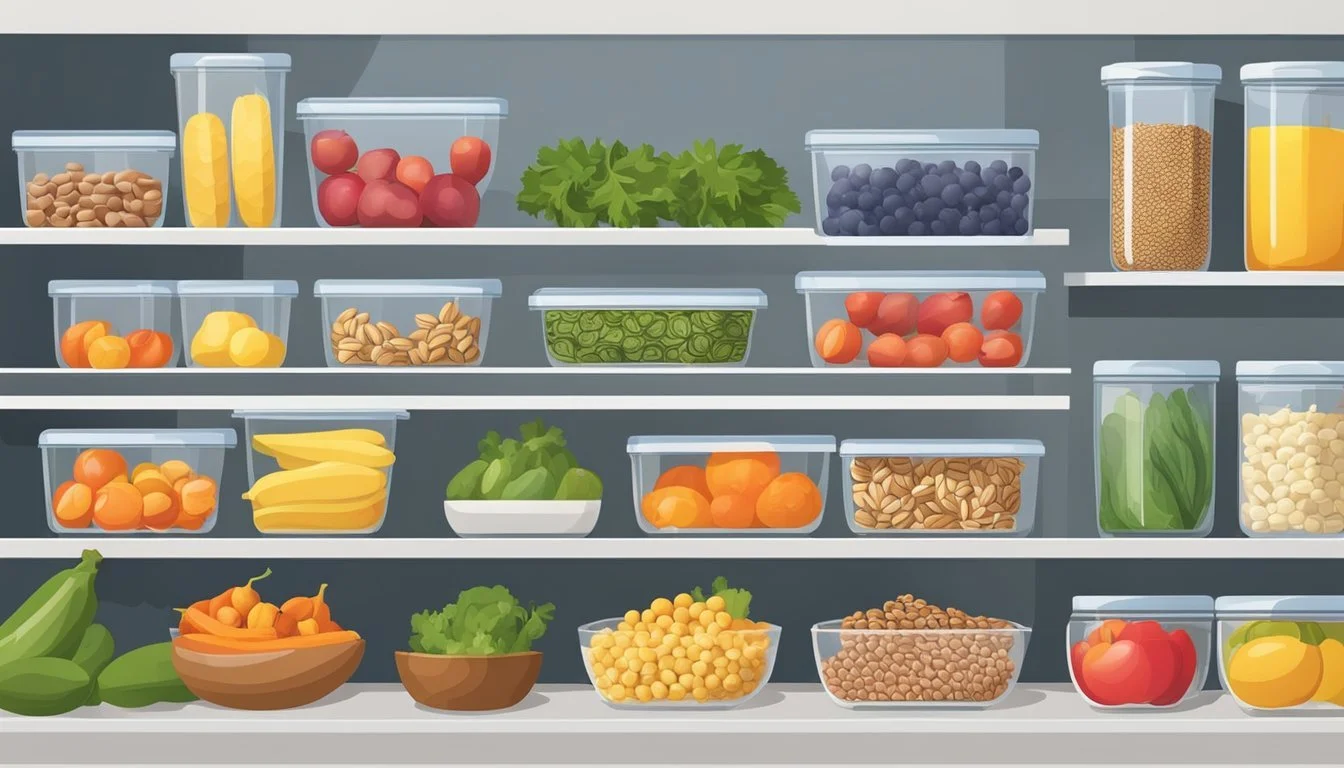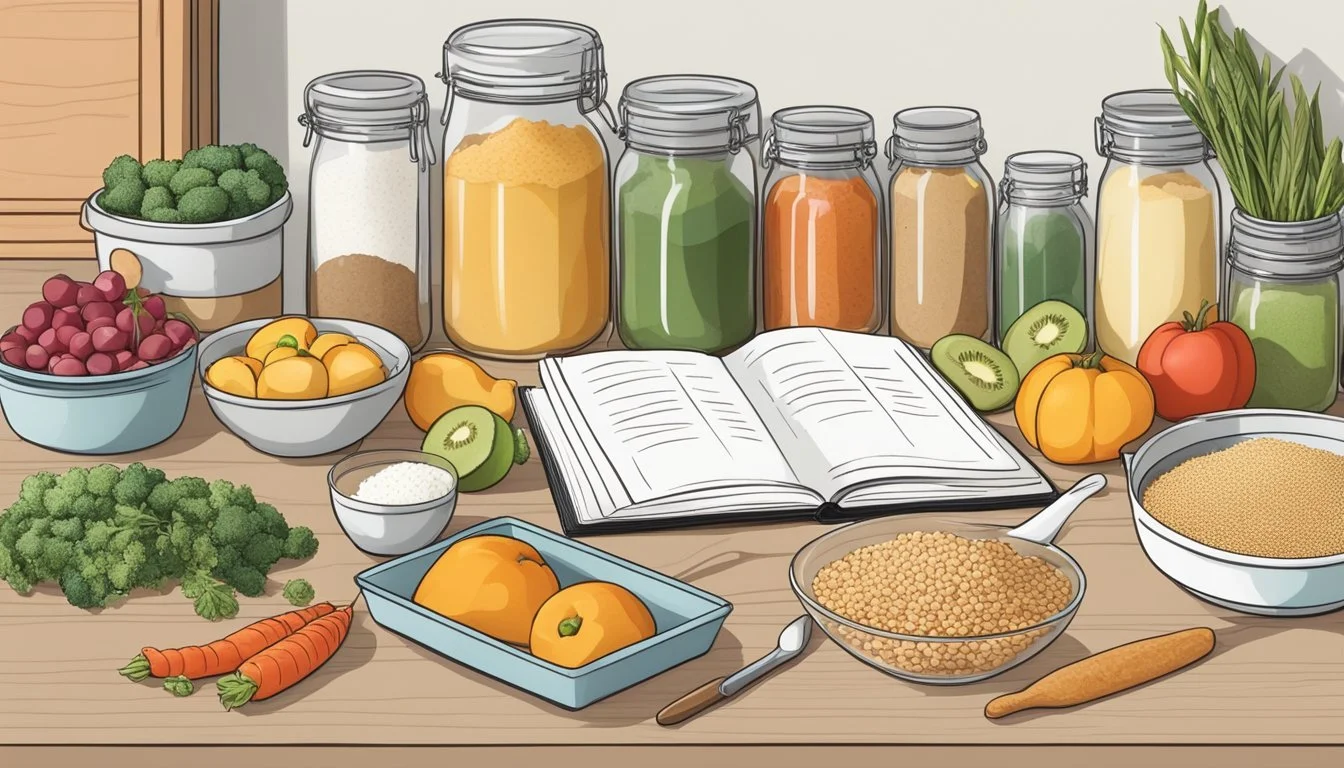Grain-Free Meal Planning
The Ultimate Guide to a Healthy Diet Transition
Grain-free meal planning can be a transformative approach for individuals looking to revise their diet due to health reasons or personal preferences. This approach excludes all grains, meaning no wheat, corn, oats, quinoa, rice, buckwheat, rye, amaranth, and barley. The benefits of a grain-free diet are varied and may include improved digestive health, reduced inflammation, and potential weight loss. To successfully adhere to this dietary change, one must be methodical and intentional in planning meals that are both nourishing and satisfying.
Embarking on a grain-free diet requires a shift in how meals are typically planned and prepared. For success, it is vital to establish a preparation schedule that aligns with one's lifestyle, ensuring that the time and effort invested in cooking are sustainable. Key elements include selecting recipes that are simple to make and focusing on a variety of nutrient-dense foods like meats, fish, legumes, and dairy to maintain a balanced diet. Adapting to a grain-free lifestyle not only opens the door to exploring innovative recipes but also encourages a greater intake of whole foods.
To ensure that meal preparation is not overwhelming, a grain-free diet often incorporates meal prepping strategies such as cooking in batches and freezing leftovers. This approach simplifies the process, providing straightforward options for future meals. Additionally, strategic grocery shopping with a comprehensive list of grain-free alternatives can streamline the transition, helping individuals stick to their meal plans without falling back on grain-based options. With the right tips and tricks, grain-free meal planning can become an achievable and enjoyable habit.
Grain-free meal planning offers a wonderful opportunity to embrace a diverse array of grain-free nutrient-dense foods while reaping the health benefits of a grain-free introduction. Whether it's incorporating grain-free bread and grain-free granola into breakfast options or preparing satisfying meals to support grain-free athletes and individuals focused on grain-free muscle building, meal planning can be a delightful and health-conscious endeavor.
For those seeking a refreshing beverage, creating enticing grain-free alcoholic beverages mocktails can provide a delightful and inclusive way to enjoy flavorful drinks while adhering to a grain-free lifestyle.
By prioritizing nutrient-dense ingredients such as lean proteins, healthy fats, and a variety of fruits and vegetables, individuals can craft delicious and well-balanced meals that align with their grain-free dietary choices. Whether the goal is to support athletic performance, overall well-being, or specific health objectives, grain-free meal planning can be a creative and fulfilling process that nourishes both the body and the spirit.
Understanding the Grain-Free Diet
A grain-free diet eliminates all grains and products made with grain or grain-derived ingredients. It is not to be confused with a gluten-free diet, which only avoids gluten—a protein found in grains such as wheat, barley, and rye.
Those adopting a grain-free lifestyle typically avoid foods including:
Wheat-based products such as bread and pasta
Grains like rice, oats, barley, and rye
Grain-based snacks (e.g., popcorn, wheat crackers)
Grain-based milks (e.g., oat milk, rice milk)
A key motivation for some individuals going grain-free may be to address digestive problems or inflammatory issues. For instance, those diagnosed with celiac disease must follow a strict gluten-free diet to prevent harm from gluten ingestion. However, some with celiac disease or non-celiac gluten sensitivity may choose to remove all grains as an extra measure.
Additionally, the protein composition of grains such as gluten can be problematic beyond celiac disease, resulting in sensitivity for some individuals. They opt for a grain-free diet to alleviate these sensitivities.
Benefits of a grain-free diet may include improvement in gastrointestinal symptoms and reduction in chronic inflammation for susceptible individuals. It requires careful planning to ensure nutritional adequacy since whole grains are a significant source of fiber and other nutrients.
Conversely, a grain-free diet is unnecessary for the general population and can be restrictive, potentially leading to nutritional deficits if not managed properly. It is crucial to approach this diet with a balanced perspective, focusing on incorporating a variety of alternative foods like:
Proteins: Meat, fish, eggs, dairy products
Legumes: Soybeans, lentils, chickpeas
Plant-based alternatives: Quinoa, buckwheat, amaranth (technically seeds, not grains)
This diet emphasizes whole, unprocessed foods, and for those embarking on a grain-free lifestyle, a well-thought-out meal plan is essential for success.
Getting Started with Grain-Free Meal Planning
Embarking on a grain-free lifestyle requires thoughtful preparation and an understanding of key components that constitute a balanced diet. Having the right ingredients on hand and knowing how to combine them is essential for success.
Creating Your Grain-Free Pantry List
The first step in meal planning is to stock the pantry with grain-free staples. A comprehensive list should include:
Proteins: such as meats, fish, eggs, and legumes.
Healthy Fats: like avocados, olive oil, and other plant oils.
Nuts and Seeds: almonds, chia seeds, flaxseed, and more.
Vegetables: a colorful variety of veggies should be abundant.
Keep these ingredients diversified to ensure a wide range of nutrients and flavors.
Designing a Well-Rounded Meal Plan
When crafting a meal plan, consider the balance of proteins, fats, and vegetables. A well-rounded plan might look like this:
Breakfast: A spinach and mushroom omelette cooked in olive oil.
Lunch (What wine goes well with lunch?): Chicken salad with a variety of nuts and seeds.
Dinner: Baked salmon with a side of roasted vegetables. (What wine goes well with roasted vegetables?)
Remember to incorporate grain-free recipes that excite your palate, so you continue to enjoy mealtime without feeling deprived.
Shopping Tips for Grain-Free Ingredients
When shopping for ingredients, keep these strategies in mind:
Prioritize fresh produce and whole foods; they are naturally grain-free.
Read labels carefully — there can be hidden grains in processed foods.
Bring a grocery list to avoid off-list purchases that may contain grains.
Look for sales and bulk purchases on staples like nuts, seeds, and fats to economize your meal plan.
By adhering to these guidelines, you can effectively navigate a grain-free diet with ease and variety.
Crafting Your Daily Grain-Free Menu
Creating a daily menu without grains can be both delightful and nourishing. It involves selecting alternatives that are rich in nutrients and keep one satisfied throughout the day. Here's how to plan grain-free meals for breakfast, lunch, and dinner that are as delicious as they are healthy.
Breakfast Options Without Grains
For the first meal of the day, eggs serve as a high-protein base that can be prepared in various ways—scrambled, poached, or hard-boiled. Pairing them with avocado provides healthy fats, while a smoothie made with a liquid base, such as almond milk or coconut water, blended with leafy greens, and a tablespoon of coconut oil adds a dose of energy without the grains.
Lunch Ideas to Keep You Energized
Lunches should be light yet energizing. A large salad made with a medley of greens drizzled with olive oil dressing is a perfect canvas for additional protein—think grilled chicken, tofu, or even a scoop of tuna. One can also opt for grain-free wraps using collard greens or lettuce as the wrap, filled with a protein of choice and fresh veggies.
Satisfying Grain-Free Dinner Recipes
Dinner is an opportunity to enjoy hearty, grain-free meals. Meats such as chicken, fish, or beef can be grilled or roasted alongside a variety of veggies. Incorporating zucchini (What wine goes well with zucchini?) or squash can lead to innovative swaps; for instance, spaghetti squash is an excellent stand-in for traditional pasta. One can also create stuffed peppers or eggplant (What wine goes well with eggplant?) boats, focusing on high-protein and fiber-rich ingredients for a filling evening meal.
Grain-Free Recipes and Cooking Tips
Embarking on a grain-free diet requires thoughtful planning and cooking strategies. This section is dedicated to equipping you with delicious snack options, insight into the importance of healthy fats, and practical grain-free culinary techniques to ensure your meals are both nourishing and enjoyable.
Snacks and Treats for Craving Control
One can satisfy cravings with grain-free snacks that are both tasty and satisfying. Nuts and seeds offer a crunchy, nutrient-dense snack choice, packed with protein and healthy fats. Consider almonds, walnuts, or pumpkin seeds. For those with a sweet tooth, fruits such as apples, berries, or sliced pears can be filling and fiber-rich alternatives.
Fruits: Apples, Berries, Pears
Nuts & Seeds: Almonds, Walnuts, Pumpkin Seeds
Smoothies are another excellent snack, laden with fruits and even greens. They can be enhanced with seeds like chia or flax for added fiber.
Healthy Fats and Their Role in Your Diet
Healthy fats are pivotal in a grain-free diet, providing essential fatty acids and helping with satiety. Olive oil and coconut oil are versatile for cooking and can also be incorporated into salad dressings. Avocado is a stellar source of monounsaturated fats and can be consumed as is or in smoothies to add creaminess. Including nuts and seeds in your diet provides a good balance of omega-3 and omega-6 fatty acids.
Oils: Olive Oil, Coconut Oil
Healthy Fat Sources: Avocado, Nuts, Seeds
Culinary Techniques for Grain-Free Cooking
When cooking grain-free, creativity with ingredients and techniques can transform your meals. Baking can be achieved with alternative flours such as almond or coconut flour. These flours require different moisture levels, so one should adjust recipes accordingly. Utilizing a combination of stovetop cooking and baking can yield diverse textures and flavors.
Cooking Techniques: Baking with Almond/Coconut Flour
Cooking Tips: Adjust moisture levels when using alternative flours
For example, one can roast vegetables like cauliflower (how long does cauliflower last?) to bring out a nutty flavor that complements the grain-free meal profile. Cooking with various herbs and spices, such as turmeric and cinnamon, can add depth without the need for grains. The preparation of tea can also accompany meals, offering a comforting, warm beverage without any grains.
Managing Social Events and Dining Out
When attending social events or dining out, individuals following a grain-free lifestyle face unique challenges. The key to success is preparation and communication. Before attending an event, it is advisable to eat a small grain-free meal, reducing the temptation to stray from your eating plan.
Pre-event Preparation:
Research: Look up the event or restaurant menu online ahead of time.
Call Ahead: Contact the host or restaurant to inform them of dietary restrictions.
Offer to Bring a Dish: Contribute a grain-free dish that everyone can enjoy.
At the Event:
Communicate with Servers: Clearly explain your dietary needs and inquire about ingredients.
Be aware of cross-contamination risks, especially at buffets.
Grain-Free Choices:
Food Category Grain-Free Options Starters Salads without croutons Main Course Protein-based dishes Sides Vegetables, legume dishes Desserts Fruit-based options
Navigating dining out can also include finding grain-free alternatives, such as lettuce wraps instead of bread or requesting vegetable noodles. Ensuring that one's eating habits align with their health goals while enjoying social gatherings is possible by planning ahead and using these strategies.
Making the Most of Leftovers and Meal Prep
When engaging in grain-free meal planning, utilizing leftovers effectively streamlines the process and reduces food waste. It's crucial to view leftovers not as excess, but as a cornerstone in the meal prep cycle.
Bulk Cooking and Storage: Doubling or tripling recipes is a strategic approach. Bulk cooking allows for leftovers that can be refrigerated for the week's meals or frozen for later use. One should store these in clearly labeled containers, noting the content and prep date to track their suitability for consumption.
Organizing Leftovers for Meal Prep: To incorporate leftovers into grain-free meal planning, one may plan certain recipes that produce ample portions intentionally. These recipes can be turned into different meals throughout the week, conserving both time and resources. For example:
Cooked proteins cut into strips for salads and wraps.
Vegetable stir-fries repurposed as omelet fillings or sides.
Freezer Efficiency: The freezer should be leveraged to extend the lifespan of leftovers. When freezing:
Let the food cool completely.
Portion it into meal-sized amounts.
Use airtight containers to prevent freezer burn.
Quick Meal Assembly: Leftovers enable quick and nutritious meals. They can be combined with fresh produce and pantry essentials to create new dishes. Having a foundation, such as a pre-cooked grain-free base, allows for variety and spontaneity within the meal plan.
By embracing leftovers as part of a sustainable meal planning process and employing these strategies, one further optimizes their meal prep routine and ensures a diverse and health-conscious diet.
Special Considerations for Grain-Free Lifestyles
Adopting a grain-free lifestyle warrants careful planning to ensure nutritional needs are met without the inclusion of grains. This approach can significantly alter one’s diet, and understanding how to navigate these changes is crucial.
Addressing Nutritional Deficiencies
A grain-free diet can lead to nutritional deficiencies if not properly managed. Grains are commonly a major source of dietary fiber, B-vitamins, and minerals such as iron and magnesium. It is essential for individuals to seek alternative sources for these nutrients. Incorporating a diverse range of vegetables, such as leafy greens and cruciferous vegetables like broccoli and Brussels sprouts, can help. Additionally, seeds and nuts are excellent sources of fiber and essential vitamins. For those who exclude grains, regular monitoring of nutrient intake is recommended, potentially with the guidance of a healthcare professional.
Key Nutrients to Monitor:
Fiber
B-vitamins (B1, B2, B3, B6, B9)
Iron
Magnesium
Grain-Free Alternatives to Common Staples
To compensate for the absence of grain-based products like bread, pasta, and rice, grain-free eaters can utilize alternatives made from ingredients such as cauliflower, zucchini, and coconut. For example, cauliflower rice and zucchini noodles are popular substitutions that provide similar textures to traditional grain dishes. Moreover, grain-free flours, including almond and coconut flour, can be used in baking. These alternatives help maintain variety in the diet while adhering to grain-free restrictions.
Grain-Free Staple Alternatives:
Rice: Cauliflower rice, shirataki rice
Pasta: Zucchini noodles (zoodles), spaghetti squash
Bread: Almond flour bread, coconut flour-based products
Understanding the Impact on Health Conditions
Some individuals choose a grain-free diet in response to specific health conditions, such as celiac disease, which requires a strict gluten-free diet due to an autoimmune response to gluten. Additionally, some people report improvements in inflammation, heart health, and blood sugar regulation when eliminating grains. Despite these potential benefits, it is important for individuals to approach a grain-free diet mindfully, as its effects can vary widely from person to person. Those with pre-existing health conditions should consult with healthcare providers before making significant dietary changes.
Health Conditions Potentially Impacted:
Autoimmune diseases (e.g., celiac disease)
Inflammatory conditions
Blood sugar regulation issues
Heart health concerns
Further research and consultation with a healthcare provider are advisable to ensure that a grain-free lifestyle is appropriate and that all dietary needs are being adequately met.
Frequently Asked Questions
What is a grain-free diet?
A grain-free diet eliminates all grains, including wheat, rice, corn, barley, and oats. This dietary choice may benefit individuals with celiac disease, gluten sensitivity, or those seeking a lifestyle change.
Is grain-free the same as gluten-free? Grain-free includes the exclusion of all grains, whereas gluten-free specifically avoids gluten-containing grains. Thus, while all grain-free diets are gluten-free, not all gluten-free diets are grain-free.
What are some tips for starting a grain-free diet?
Individuals should:
Educate themselves on which foods are grain-free.
Plan meals in advance to prevent the temptation of convenience foods.
Read food labels carefully since many processed products contain grains.
Can a grain-free diet provide enough nutrients?
Yes, with careful planning. Meat, fish, eggs, dairy, and legumes provide protein. Fruits, vegetables, nuts, and seeds can supply other essential nutrients.
What are some grain-free cooking tricks?
Use almond or coconut flour for baking.
Substitute zucchini noodles or cauliflower rice for traditional pasta or rice.
How can cereal grains harm some individuals?
They can exacerbate symptoms of celiac disease or gluten intolerance. Some believe grains may cause inflammation; however, this view is not universally accepted and lacks significant scientific consensus.
Common Grain-Free Substitutions
Grain Source Grain-Free Alternative Pasta Zucchini noodles, spaghetti squash Rice Cauliflower rice, broccoli rice Bread Lettuce wraps, eggplant slices Tortillas Collard green wraps, cheese shells
Where can one find grain-free recipes?
Numerous resources are available online, including specialized blogs and dietary websites offering a variety of grain-free options.

